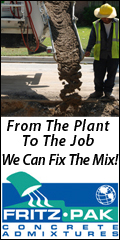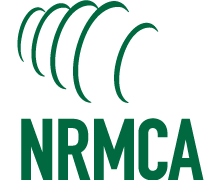
| Archive | nrmca.org | E-Store | Conferences & Events | Certifications | InFocus | Membership Directory |
Virginia Science Museum Chooses Pervious Concrete for Multiple Uses The Science Museum of Virginia recently implemented its RainKeepers Project, an urban retrofitting, demonstration, monitoring, training and certification program. The intent of the $1.5 million project was to improve a combined 1.75 acres of land while reinforcing the Museum’s commitment to expanding eco-friendly practices onsite and within the community. As part of that endeavor, the Museum recently incorporated pervious concrete into its interactive display, reports NRMCA Senior Director, National Resources Phil Kresge.
Thanks to the combined efforts of NRMCA members John Lockett of Roanoke Cement and James Wallis, Powhatan Ready Mix, the Museum selected pervious concrete over porous asphalt and permeable paver alternatives. Lockett and Wallis stressed the importance of pervious concrete’s environmental advantages and its durability, particularly under heavy loads in hot temperatures. They also provided museum officials with pervious concrete sample kits to give them a first-hand look at how well the product works. As a result of their efforts, the museum also replaced half an acre of an existing asphalt parking lot with pervious concrete.
The 6" pervious concrete pavement was placed by NRMCA Certified Pervious Concrete Craftsman Richard Hite of R. Hite Concrete Construction, Lenaxa, VA. The pavement was placed over a subbase of Solite lightweight aggregate. The high absorption of the aggregate subbase adds to the storage capacity of the detention layer. Sophisticated instrumentation within the matrix of the pervious concrete and subbase will allow the museum to measure first flush activity as well as other water quality benchmarks.
To further engage visitors, the museum is completing an interactive exhibit to help the public understand these new techniques in mitigating stormwater flows and how they can do its part by modifying living behaviors. Featuring replicas of each of the museum’s project initiatives, videos, interactive panels and artifacts, the RainKeepers exhibit endeavors to bring awareness to visitors and encourage them to aid in efforts to make the James River and Chesapeake Bay cleaner for wildlife and humans.
For more information, contact Phil Kresge at pkresge@nrmca.org.
|
|
|





